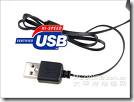
Windows xp – Free Software for Partition Manager
Free Software for the Partition Manager on Windows XP/vista? Solution: Try GParted Live. You can create a Boot CD and use that to work with partitions.

Free Software for the Partition Manager on Windows XP/vista? Solution: Try GParted Live. You can create a Boot CD and use that to work with partitions.

 Will my new SCSI drive boot my computer? or error message:
Will my new SCSI drive boot my computer? or error message:
no ROM BIOS?
The drive will need to be partitioned and formatted for your computer’s operating system before it can be used as the boot drive. Follow the instructions in the operating system or computer manual for installing a new hard drive and loading the operating system.
SCSI boots from BIOS. Most SCSI controllers feature on-board ROM BIOS to controll the disk drive. Older SCSI controllers may use jumpers or a start up disk to access BIOS. Enable SCSI BIOS for the active partition, C:\, to be recognized. Using more than one SCSI controller? Choose only one to start up. Typically only one active partition is allowed each drive. If BIOS has support for removable disks as hard drives, choose:All Disks. Consult your SCSI controller or system guides.

Case:The F area of the customer’s personal computer hard disk is gone, and there are many important information in it to restore it.Customers find data recovery through the Internet.After the telephone consultation, he immediately rushed to the data to restore Room 1309, Baibaihui Technology Building, No. 23, Xichi Road, Xihu District. Solution:After data recovery engineer…

We first look at the following two pictures. Picture 1 is the “BIOS CHIP” of the circuit board. When we replace the PCB, we need to swap the “BIOS CHIP” with your original PCB. Picture 2 shows the “Board Number” of the board, and the “Board Number” must be the same! FAQs of 100731589 PCB…

HDD Printed circuit board (PCB) with board number G4311A is usually used on these Toshiba hard disk drives: MQ04ABD200, AA01/JT000U, HDKGB84AYA01 T, Toshiba 2TB SATA 2.5″ Hard Drive; MQ04ABF100, AA00/JU001C, HDKCB88H0A01 T, Toshiba 1TB SATA 2.5″ Hard Drive; MQ04ABF100, AA00/JU0G0A, HDKCB88S0A01 T, Toshiba 1TB SATA 2.5″ Hard Drive The G4311A Toshiba PCB repair process can…

Case:Customers accidentally deleted the MDF file of the MS SQL database. Before finding us, we had scanned the MDF file that could not be scanned before it could be added. Solution:After communicating with the user, it was found that the user did not store the scan results in the logical D drive, but the user…

 You may have heard that USB 2.0 is “backward-compatible” with USB 1.0/1.1 (Full-Speed USB). While that’s true, USB 1.1 is also forward-compatible with USB 2.0.
You may have heard that USB 2.0 is “backward-compatible” with USB 1.0/1.1 (Full-Speed USB). While that’s true, USB 1.1 is also forward-compatible with USB 2.0.
Whenever a system has USB 2.0 ports, you’ll find the “Enhanced” USB controller in Device Manager, but you will also find two other USB controllers. These two to mantain backward compatibility to USB 1.1 devices. Each USB 2.0 host actually has 3 chips onboard. The USB controller routes signals to the correct controller chip depending on how a device is recognized. Where a device is physically plugged in has no bearing on how it is routed. All ports on a USB 2.0 motherboard can host any USB devices at all as long as the system and devices are healthy.
The vast majority of USB 2.0 devices will work on older PCs and Macs. None should flat-out fail unless there are other issues with the system. Hi-Speed USB devices will revert to Full-Speed operation when connected this way. Understand that Hi-Speed is at least ten times faster than Full-Speed in actual operation, so the speed difference is quite noticeable.

Case:When the customer reinstalls the system, forget the files of the desktop, the desktop file is placed on the C drive. As a result, all the files on the desktop after reinstalling the system are lost. There is a very important TXT document.It is very small, and there is no way to recover with a…

About Kroll Ontrack Data Recovery: As the industry leader and the largest data recovery services provider in the world, Ontrack® Data Recovery can recover your deleted, corrupt, missing, or inaccessible data quickly and securely. Having performed more than 500,000 data recoveries since 1985 and utilizing our 18 state-of-the-art data recovery labs and ISO-5/Class 100 cleanroom…